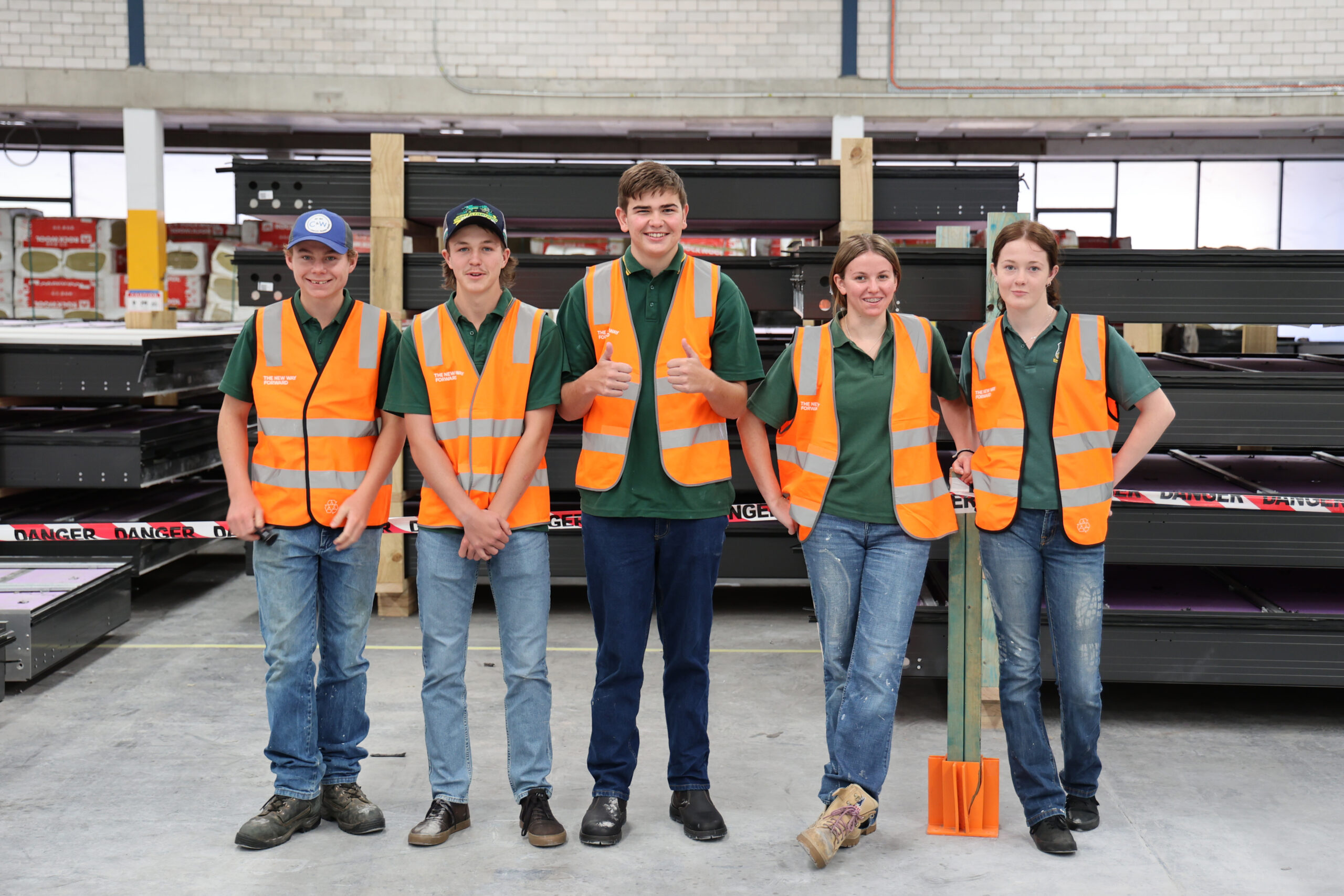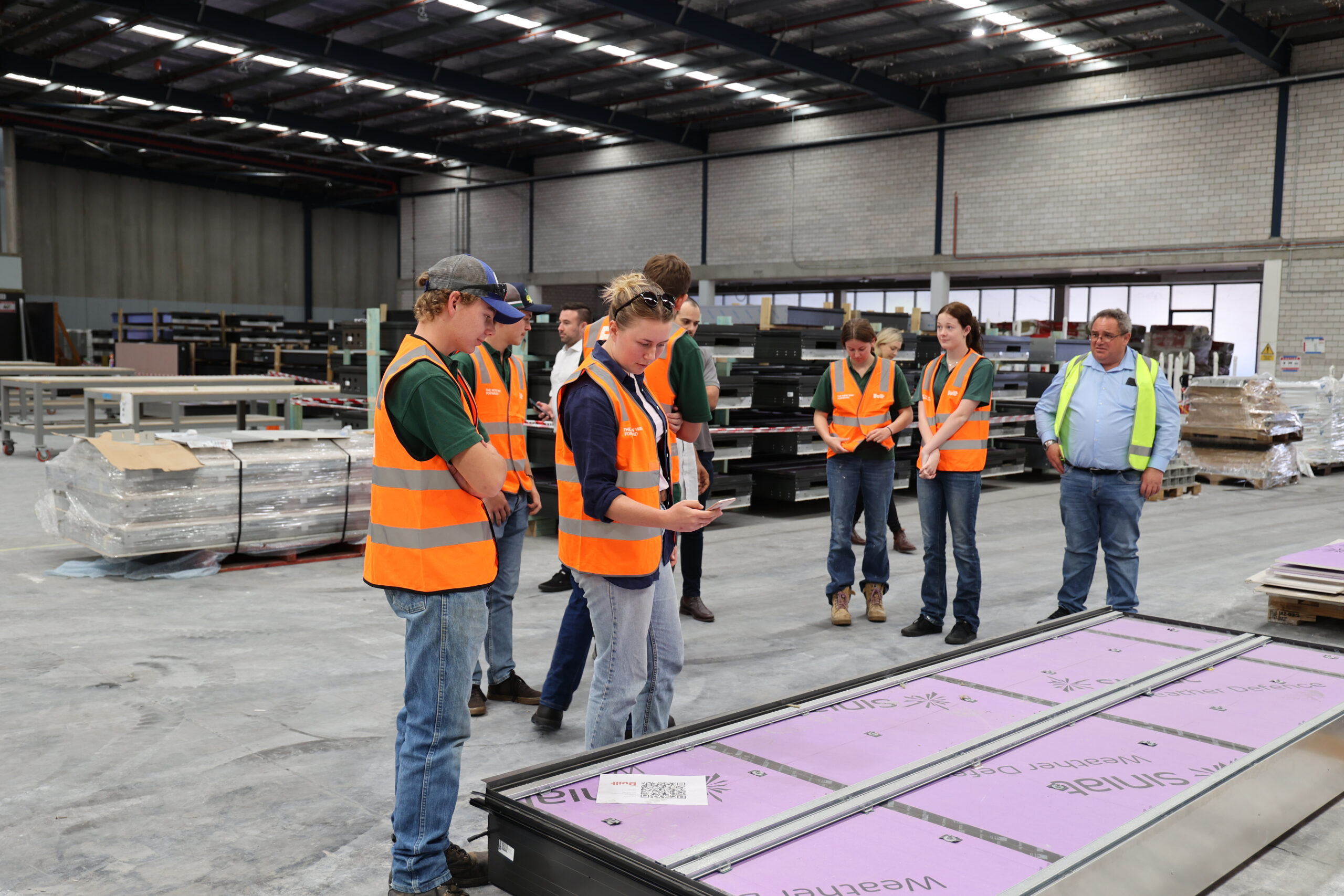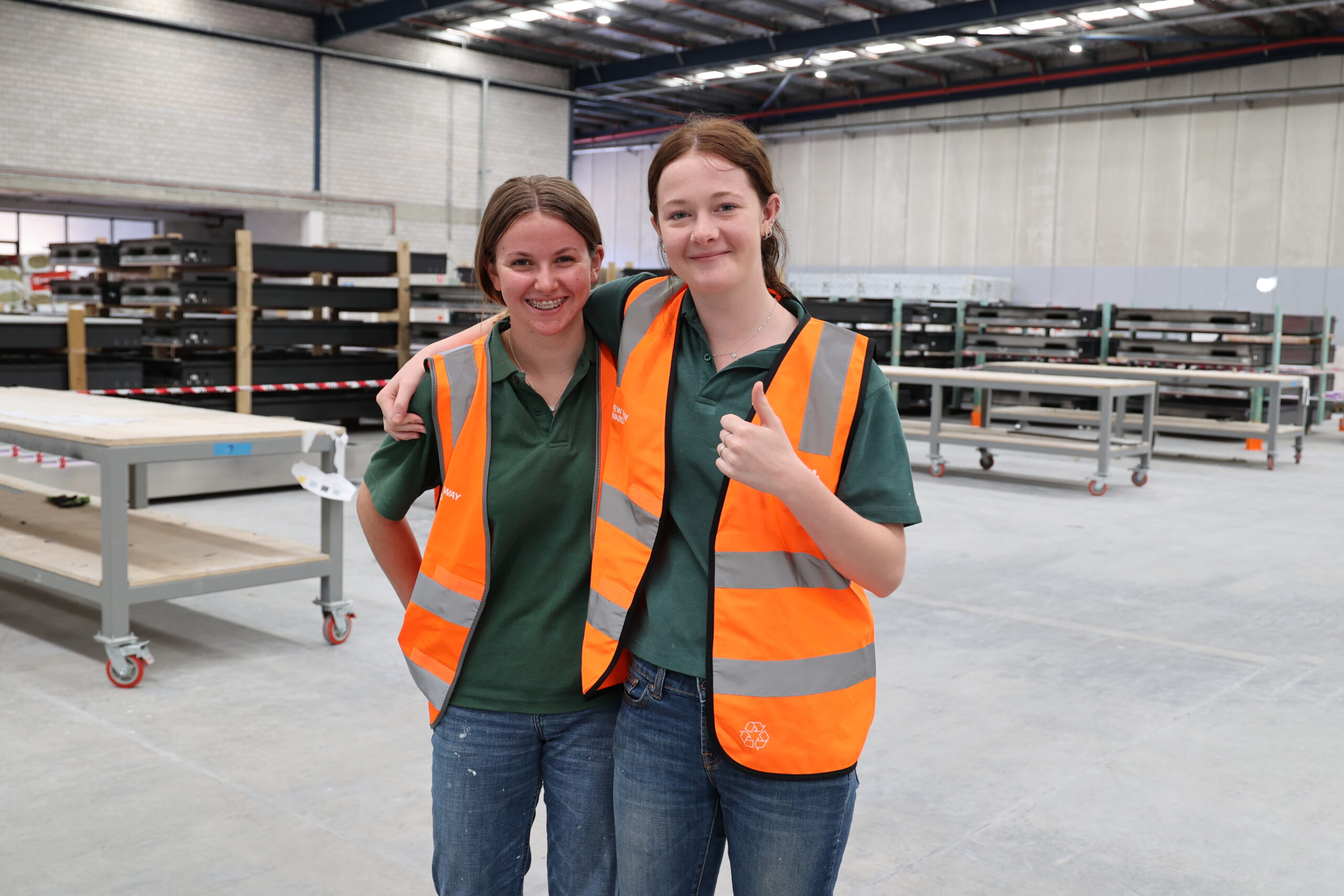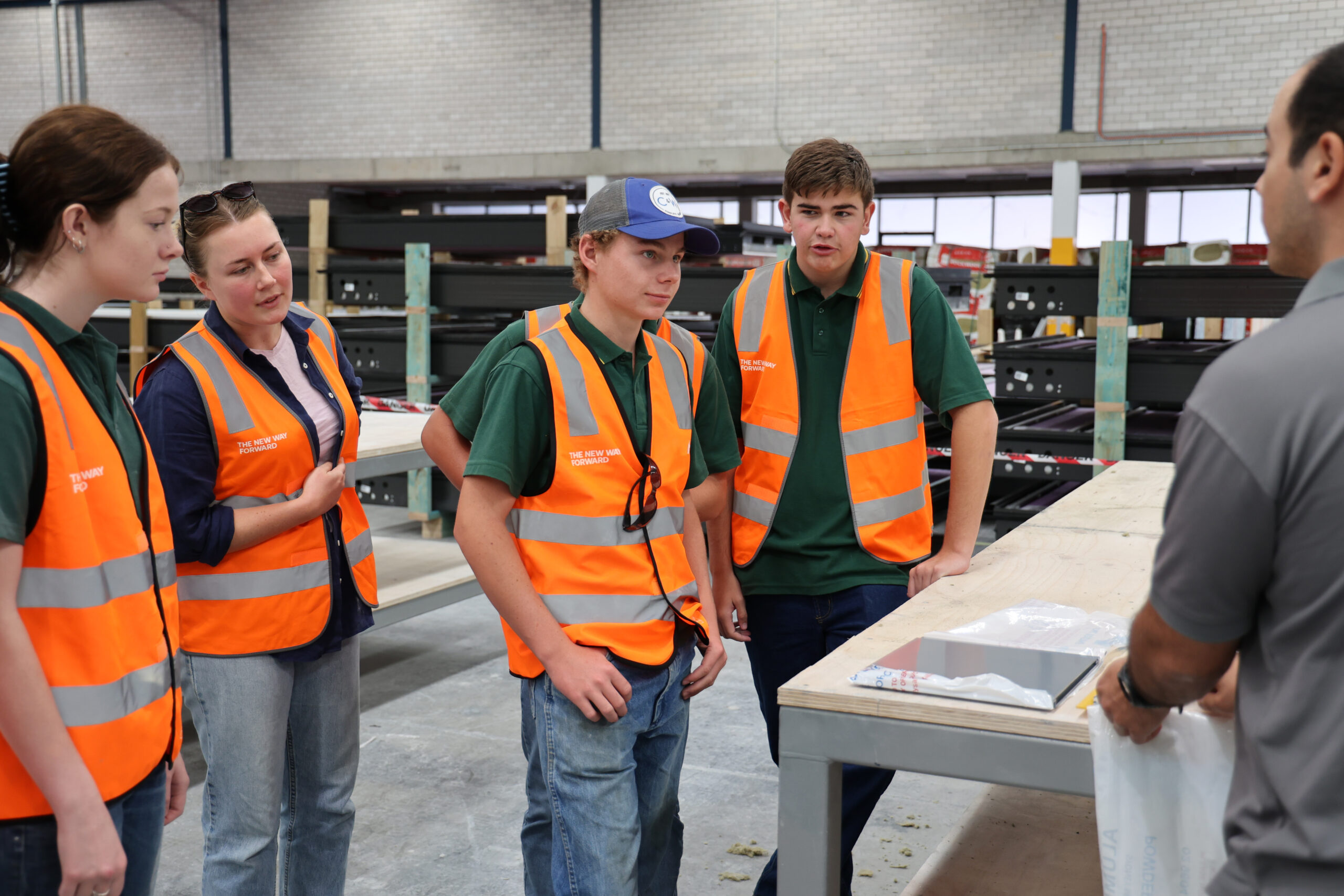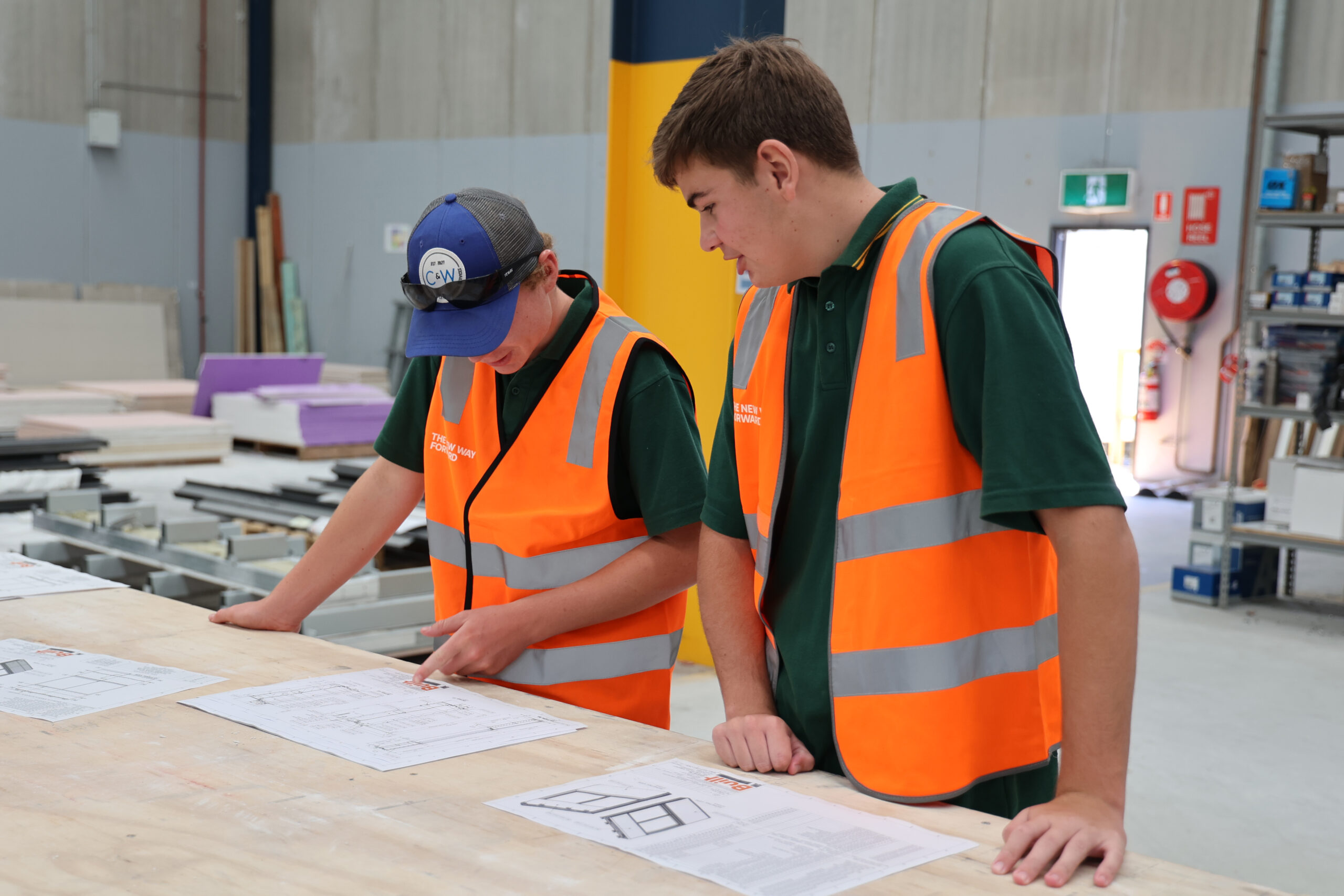Students from Wee Waa High School were given a unique opportunity recently to visit the Sydney factory where the building components of their new school are being manufactured.
The students, who are studying wood and metal work, stopped by the factory to learn about the components and design materials that will be used to build the multi-million dollar school on Mitchell Street.
The school’s redevelopment project is employing modern methods of construction using a kit of parts methodology.
This means the building’s components are manufactured off-site and then will be assembled on the school site this year, providing students in the district with state-of-the-art educational facilities.
The Department of Education provided The Courier with an update on the students’ tour and said WWHS will be ‘the first complete school in NSW to use this methodology’.
In addition to the purpose-built wood and metal workshops and new equipment and machinery, the school will also enjoy new learning spaces and modern core facilities including a library, multi-purpose hall, agricultural and environment centre, new sports courts and fields as well as an Indigenous cultural centre.
Student Lindsie Lonnen said, “It’s really interesting to see how they build [the components] off-site and how they’ll assemble them together on-site.”
“I’m just excited to get into a new school and use the new tools and equipment,” added student, Jye Smith.
Teachers Steve Catt and Sarah Trevaskis also toured the factory with the students in December.
Wood and timber technology teacher Ms Trevaskis, explained the students will be studying the subjects of manufacturing and engineering or industrial technology timber in Years 11 and 12.
“With both subjects having a heavy focus on industry, they should be able to draw on what they’ve seen today in terms of processes, terminology and innovations,” Ms Trevaskis.
“Not everyone gets to see their school being built in a factory.
“That’s pretty special.”
The students will be able to witness their school being assembled on-site this year.
The department’s School Infrastructure website states, ”The parts will be transported to the school site on trucks and then assembled into place by local trades workers.
“This approach can reduce on-site construction assembly time by up to 30 per cent and provide an opportunity for the local workforce to be involved in the assembling of components.”


